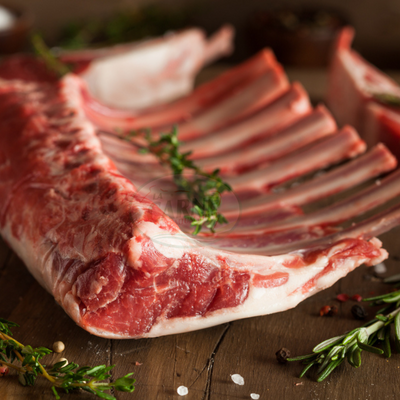How to cook steaks
COOKING STEAKS
- It's really easier than it looks and can be done with any cooking equipment. We have survived many years without having fancy pans or thermometers. Using your senses is a great way to get into the world of steak.
Option 1: The Tent method
- This is the method we first started using when you have a simple pan and nothing else. Simply season your steak on both sides, heat a pan to medium heat until well heated, add a knob of butter and olive oil then sear the steak until you get a nice color. Then flip and cook for half the time you cooked the first side. Transfer to a chopping board and cover with foil for half the time you cooked the whole steak. This is called resting, to allow the steak juices to redistribute. However, you can also just go straight to cutting because you can also mop up the juices as you eat it! Slice the steak against the grain (90 degrees to the muscle fibres) to maximize your eating quality.
Option 2: Traditional searing using a thermometer (best practice!)
For a thick steak, it's hard to know if the middle of the steak is cooked even if both sides look nice and caramelized. This is where thermometers come in. Probe thermometers like the Weber iGrill 2 or Meater are handy because you don't have to keep opening the oven to check the temperature (and risk burning yourself). However, using an instant read thermometer is also useful to confirm the final temperature as sometimes, probe thermometers do overheat and show a higher temperature than actual. Stick the steak in a low oven of 150C after searing on both sides until you get the internal temperature to the doneness you prefer. See chart below for temperature guide.
Option 3: Reverse searing using a thermometer (even better best practice!)
- The reverse sear method was made famous by Kenji Lopez-Alt of Serious Eats and basically reverses the above 2nd option. Traditional searing works fine, but it does cause a grey band of meat where the searing was first done, and the middle of steaks has a very ruby red fleshy look to it. Reverse sear avoids this by first cooking the meat to 10 degrees less than the desired internal temperature, resting it then searing over high heat with aromatics and butter to get a lovely caramelized color. The result is a more consistent cook because the steak is cooked in a low oven and you also don't have to rest steak after searing which is great!
- What to do: heat your oven to 95 to 135C. Insert probe thermometer into your steak. The lower the oven temp, the more consistent the cook, but the longer the steaks will take to get to your desired temperature (10 degrees less than the final cooking temp, see below chart). Once steaks are cooked internally, take out of the oven and rest for at least 10 mins in room temp. Heat a pan to medium heat, then add some olive oil, unsalted butter and your choice of aromatics like herbs and whole garlic. Sear the steaks until you get a lovely caramelized exterior. Transfer to plates and consume immediately.
- This is also a wonderful option to use when you have many guests over, as you can pre-cook the steaks to the desired doneness then simply sear for just a few minutes right before guests are actually ready to eat.

CUT ACROSS THE GRAIN PLEASE.
Warning: graphic literal description ahead, but it helps understand! When you eat steak, frankly speaking, you are chewing through muscle fibres. If you cut along those fibres, you end up having to break those fibres apart with your teeth. Cutting across the grain means using your knife to cut those fibres for you before eating. The result? A really tender, juicy and amazing steak experience.
In some steaks like tenderloin, ribeye and striploin, you don't have to pay big attention to cutting against the grain, but for secondary cuts like flank, skirt steak, picanha and tri-tip, you can clearly see the muscle fibres and you just have to cut 90 degrees to them to enjoy them substantially better. You're welcome.

















